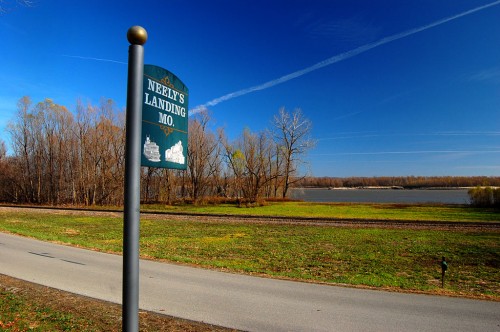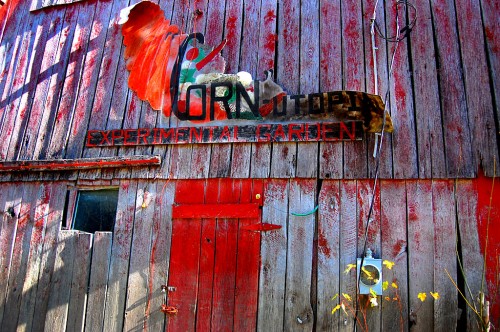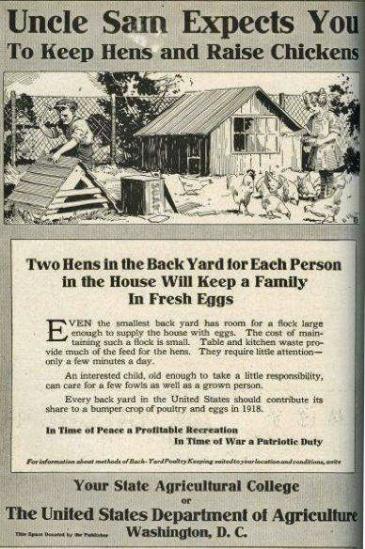 Florida Foodie buddy Jan Norris sent me a link this morning about how chickens became a war crop during World War I. I thought it was interesting, but not that exciting.
Florida Foodie buddy Jan Norris sent me a link this morning about how chickens became a war crop during World War I. I thought it was interesting, but not that exciting.
Now I see chickens everywhere
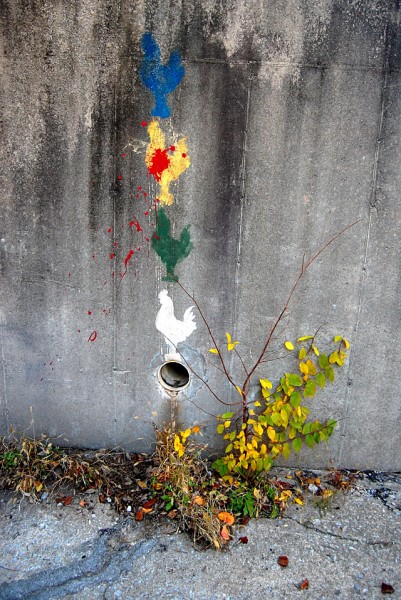 I was shooting a building in th 100 block of North Main Street for a story when I stepped into the alley for a different angle. In my newly chicken-sensitized state, I immediately was drawn to these stencils.
I was shooting a building in th 100 block of North Main Street for a story when I stepped into the alley for a different angle. In my newly chicken-sensitized state, I immediately was drawn to these stencils.
If I was back in the Fine Arts program at Ohio University, we could spend hours analyzing the hidden meanings behind this work of folk art. Is there a significance to the order of the colors? Does the red signify blood? Is it a political statement about the Trickle-Down Theory? Let’s dissect the racial angle. Is it significant that there are no black chickens? Is the white chick on the bottom for a reason? Why are they perched on a drain?
I have to admit that it is curious that the “artist” went to the trouble of using four colors, plus red. Was he / she trying to figure out which color was most suitable for concrete?
Cape has been made safe from chickens
With all of the other obsessions with regulations, I just KNEW Cape would have had to legislate chickens in some form or another. Indeed, an Oct. 10, 2010, Scott Moyers‘ story in The Missourian said that an ordinance that would allow Cape Girardeans to keep up to 10 hens (no roosters) per tract for non-commercial uses was headed for adoption.
Unfortunately for folks hoping to be able to get their fresh eggs from their backyards, the city council switched gears during its Nov. 15, 2010, meeting and put the kibosh on chickens in the city.
Let the Hen Whip the Kaiser!
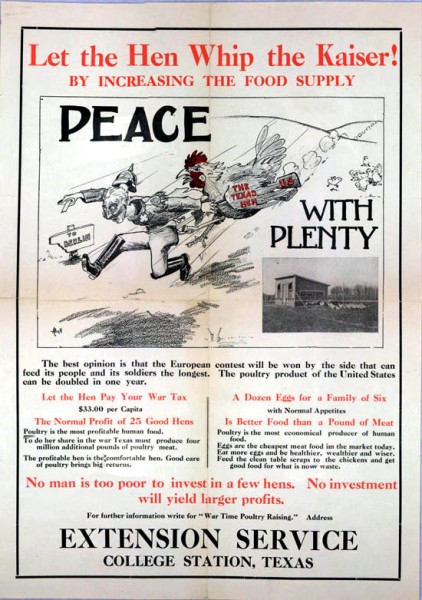 While trying to find examples of chicken posters, I came across this great site with lots of war era food posters. It’s worth a visit. This poster was from the College Station, Texas, Extension service in 1917.
While trying to find examples of chicken posters, I came across this great site with lots of war era food posters. It’s worth a visit. This poster was from the College Station, Texas, Extension service in 1917.
Keeping chickens: patriotic and profitable
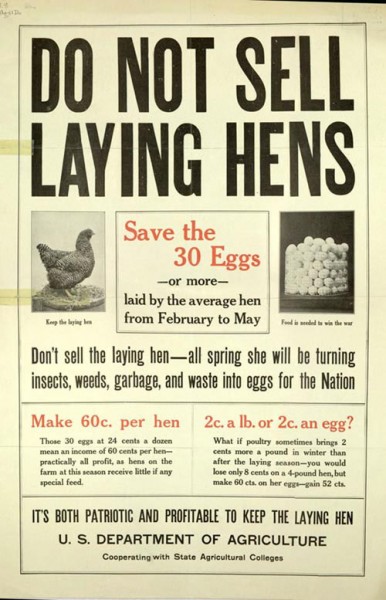 This USDA poster urges farmers not so sell laying hens. You could make more money selling the eggs than the chicken, it pointed out.
This USDA poster urges farmers not so sell laying hens. You could make more money selling the eggs than the chicken, it pointed out.
When you look at the posters from those eras, it’s clear that the American public was expected to sacrifice to win the wars.
Where’s THIS message?
Here’s a piece I did when gas prices were headed to four bucks a gallon this spring. It talked about the June 11, 1943, Missourian Phillips 66 ad headlined “You are a Soldier in The Battle of Transportation.”
Have you seen this World War II message delivered on TV, radio or print or by any politicians?
“Every bit of rubber and gasoline you save on the home front is a contribution to the combat needs of our fighting men on every battle front.
“You can help hasten the day of victory by confining your driving to a patriotic minimum. Use your car only for going to and from work …for needed shopping…for war-time activities like vegetable gardening…for travel to and from places without other transportation facilities.
“Remember, your Government asks you to do your part to prevent a transportation breakdown, asks you to care for your car–for your country.”
The concept of shared sacrifice for the common good just isn’t popular these days, I guess.



